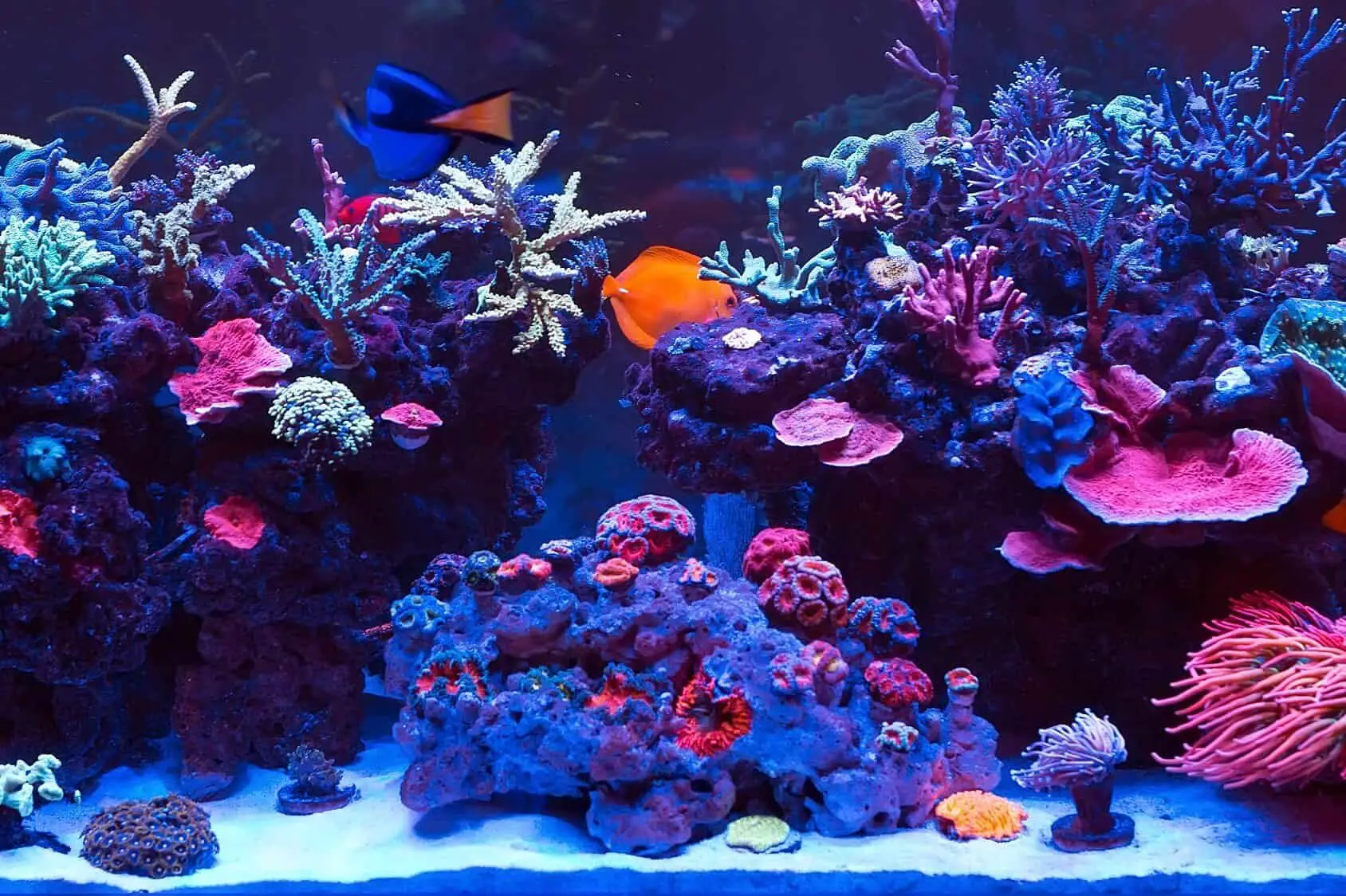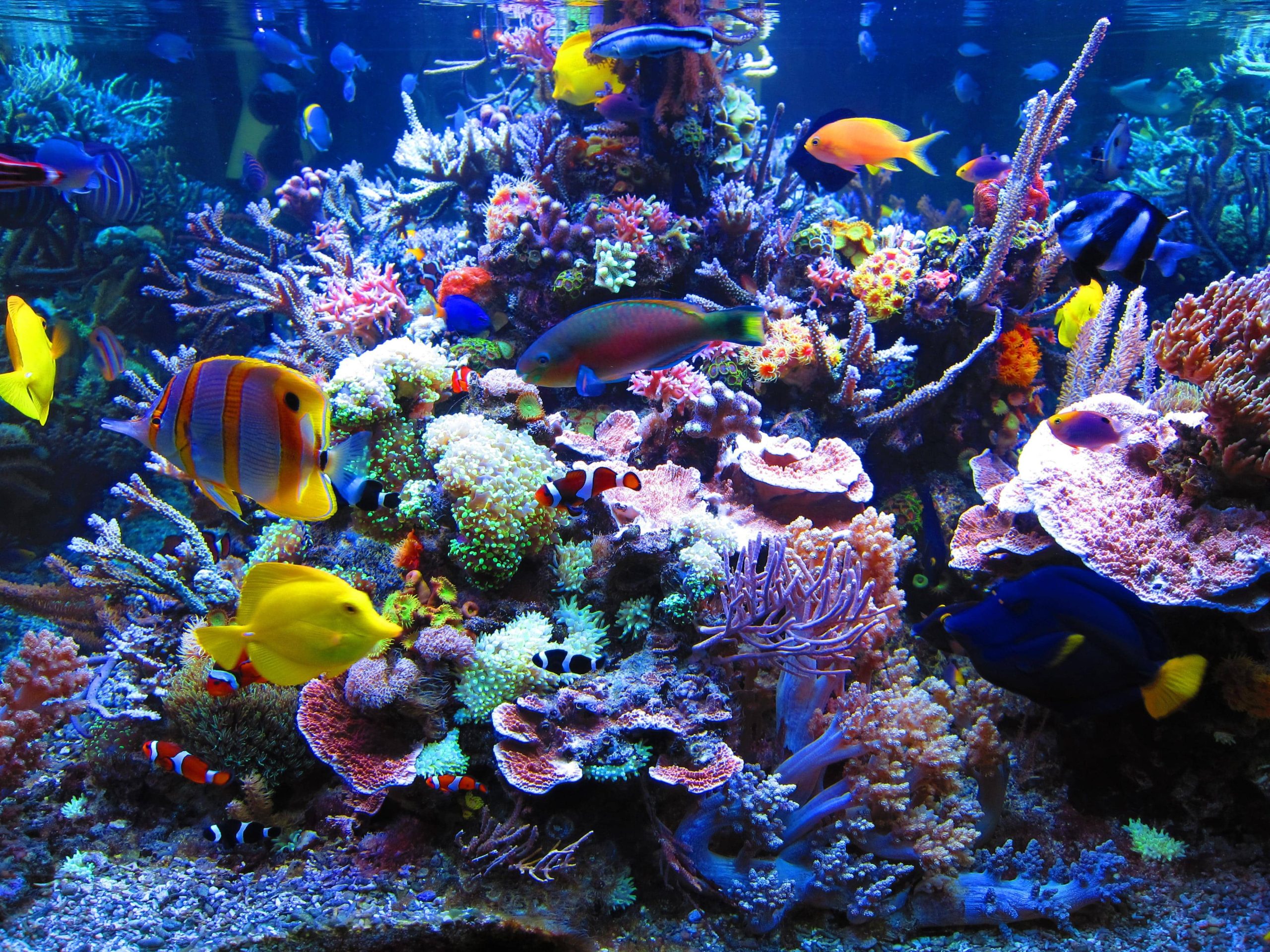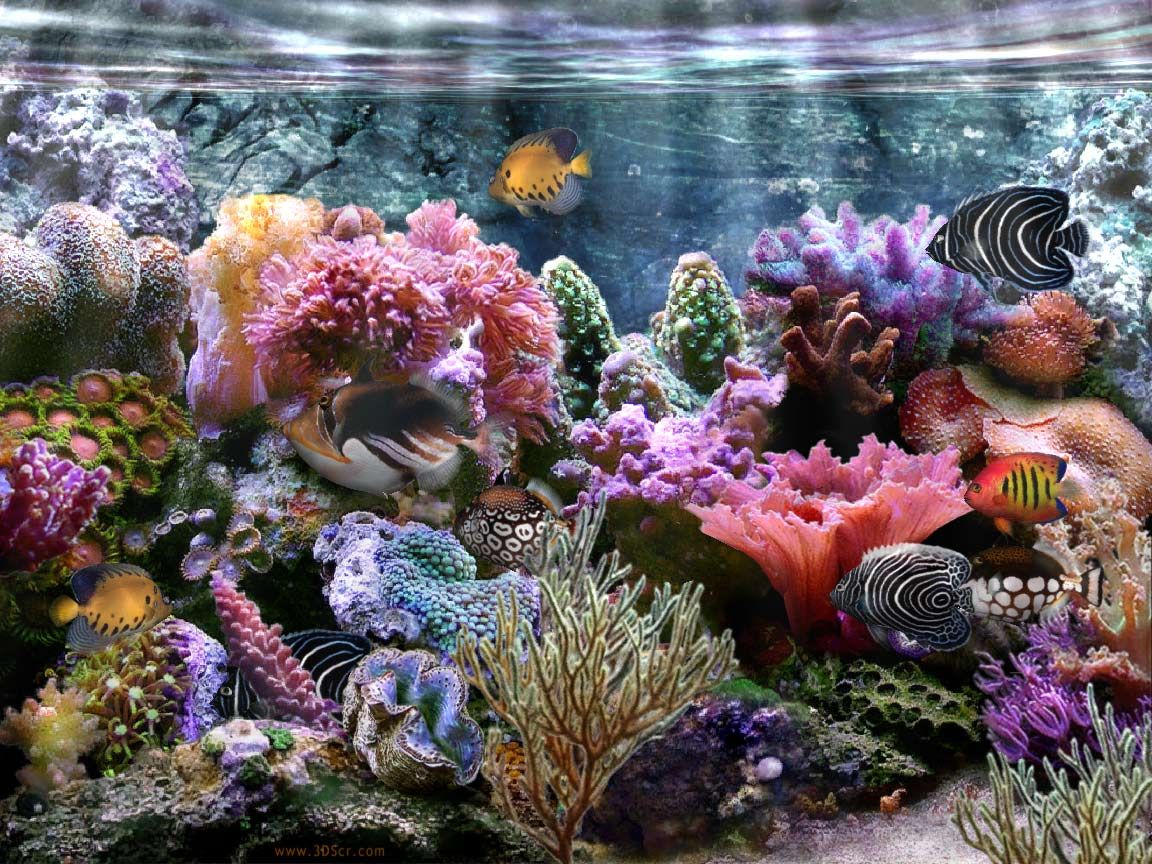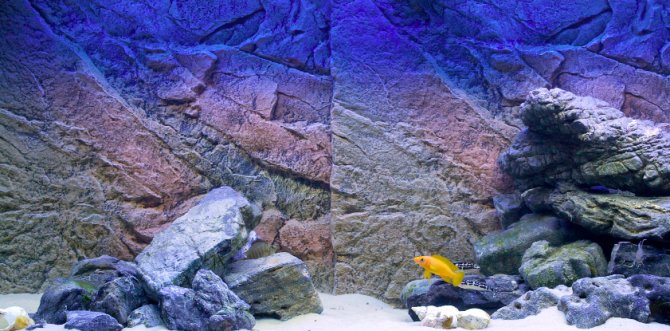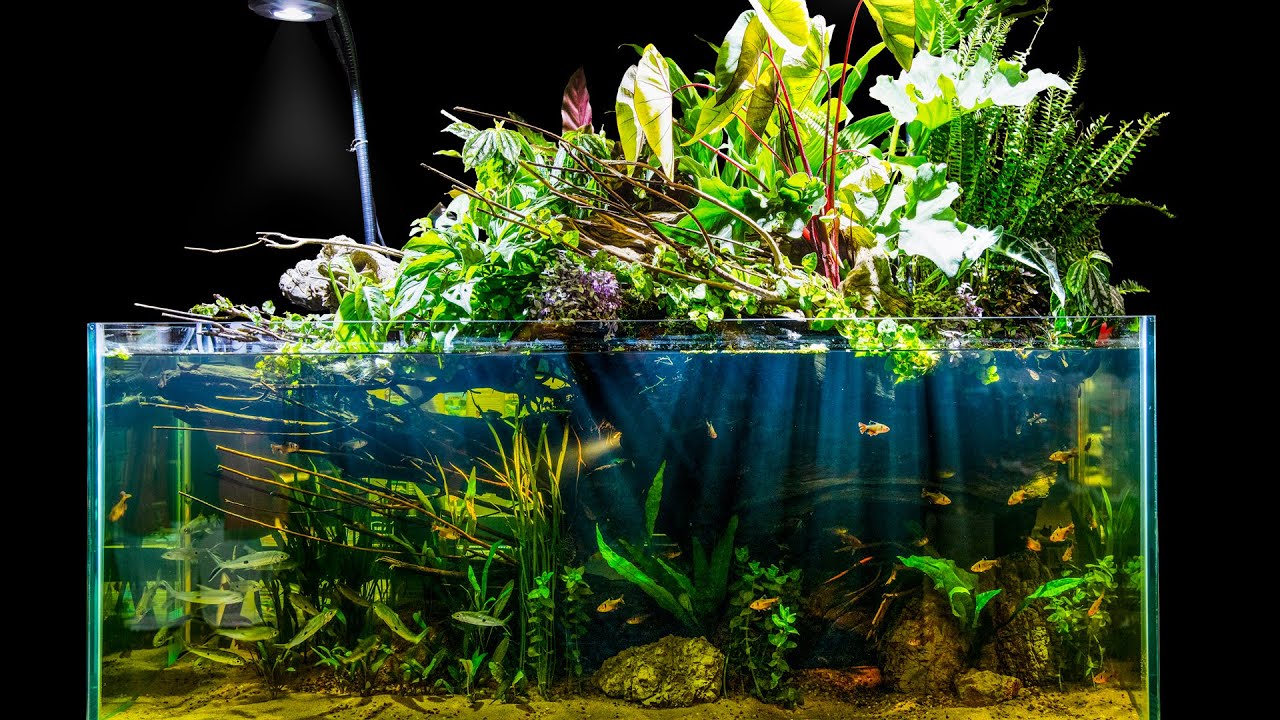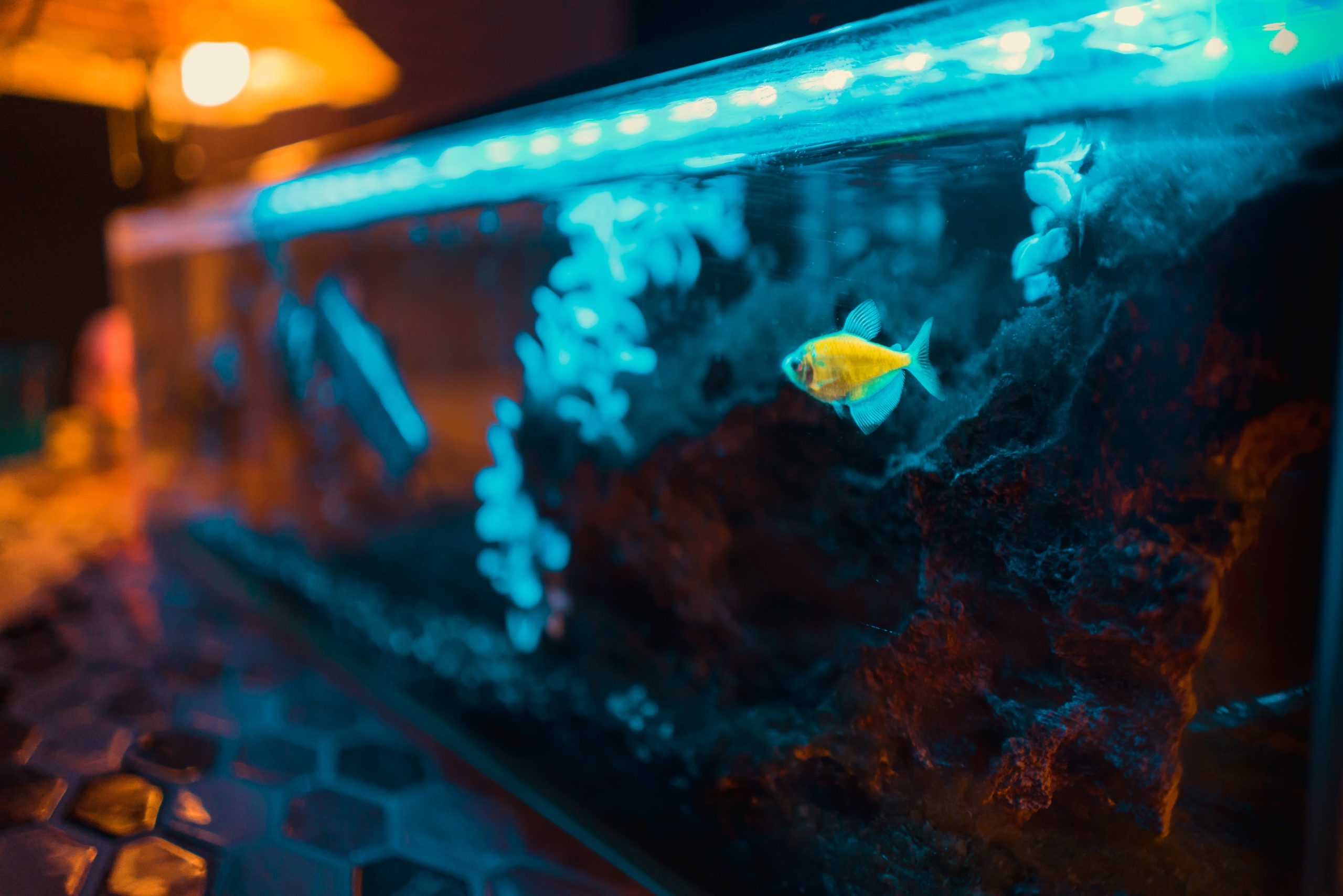This Saltwater Aquarium Setup guide serves to condense all the preceding information into a handy checklist. Although we still recommend that you read (and re-read) the various other articles on this website thoroughly, to get a good grasp of the basics of the saltwater aquarium hobby.
You are obviously very patient and are willing to do the research; qualities that will serve you well as you enter the world of saltwater aquarium-keeping.
Saltwater Aquarium Setup – The 11-Step Program
Step 1: Get approval!
Whether you intend to go with a 20-gallon saltwater aquarium setup in your dormitory, a 5-gallon pico tank on your desk at work, or a 300-gallon behemoth in the living room of your house, always get approval first. Be it your boss, your landlord, or your spouse, it is always a good idea to discuss things before you go ahead and set up your saltwater tank.
And even if you have no one to answer to, ask yourself if this hobby is right for you and if you are ready and willing to put in the time, money, and physical effort! Remember that there is no such thing as a ‘set-it-and-forget-it’ saltwater aquarium setup. This hobby is a labor of love that requires passion and dedication.
Step 2: Decide on the size of the tank for your saltwater aquarium setup
Remember that the larger the tank, the more costly it will be to maintain because of its greater use of electricity for the aquarium lighting, return pump, protein skimmer, and chiller.
Other considerations include deciding on an all-glass or acrylic tank, and whether you will have the tank custom-built, or go with a ready-made aquarium. Decide if your saltwater aquarium setup will include a sump.
Step 3: Where will the aquarium be placed?
Is the location you have chosen structurally sound and able to support the weight of the tank, water, live rock, and all equipment? A fully stocked but modest 3′ x 2′ x 2′ tank weighs about half a ton!
Our article, Ideal Location For The Saltwater Aquarium In Your Home offers some important considerations on the placement of your saltwater tank.
Step 4: What type of fish, corals, and other aquarium inhabitants do you intend to keep?
Do you intend to keep SPS corals or LPS corals, or are you going with a Fish Only With Live Rock (FOWLR) aquarium?
Know that a full-blown coral reef aquarium will be more costly to maintain, requiring intense aquarium lighting and more diligence on the part of the aquarist as far as maintaining good water quality.
Step 5: Research and choose the right equipment for your saltwater aquarium setup
There is a mind-boggling array of equipment available to today’s aquarium hobbyist — aquarium lighting, protein skimmers, phosphate reactors, aquarium chillers, monitoring devices, wavemakers, and powerheads — hundreds of equipment manufacturers all vying for your hard-earned money. Many of us remember spending countless weeks scouring the internet, reading up, and making a ‘to be researched further’ list of equipment for our first saltwater aquarium setup.
We cannot emphasize enough how important it is to always do your research before making a purchase. Some LFSs will try to sell you anything and give you misleading advice, making you spend your money unnecessarily. Read about the equipment you do not need for your saltwater aquarium setup.
Step 6: ‘Wet-run’ your aquarium with tap water
It is now time to check the worthiness of your saltwater aquarium setup.
Once you have taken delivery of your tank and it is seated properly on the aquarium stand in its final location, fill the tank with tap water, turn on the powerheads, wavemakers, and return pump (if you have a sump) and let the system run for a couple of days.
This accomplishes two things — it checks for leaks in the tank, sump, and plumbing and also rinses out the aquarium thoroughly of any dirt and debris. This debris will settle at the bottom of the tank and sump and can be siphoned out easily.
Do an overall water level check by turning off your return pump and check the water level in your sump. If the sump appears to be nearly overflowing when you turn off your return pump, you have too much overall water volume. Scoop or siphon out enough water so that the water level in the sump is a good six inches from the rim when the return pump is turned off. In the event of a power outage, this ensures that the backflow of water from the main tank will not overfill the sump, getting water all over your floor.
Mark the water level with a piece of tape as this is the amount of RO/DI water that you will need to fill your tank, as described in Step 7.
After a couple of days, turn off all the equipment and remove and discard ALL the tap water from your aquarium. Wasteful, I know, but you could always use the discarded water for watering your lawn or washing the floor.
Step 7: Fill your aquarium with RO/DI or deionized water, and add aquarium salt
After you drain the tank completely of the tap water, fill it up with RO/DI or deionized water.
At this point, you would also have purchased enough aquarium salt to raise the salinity of the RO/DI water to around 1.022 SG. Pour the salt into the water and let the tank run with the return pump and wavemakers on, to thoroughly dissolve the aquarium salt. Depending on the salt you use this can take anywhere from a half hour to an entire day.
Step 8: Add the sandbed to your aquarium
Personally, I always choose a sandbed depth of about 2 to 3 inches. The sand should be aragonite sand meant for aquariums and not Home Depot-type ‘play sand,’ which contains high levels of silicate that will cause untold algae problems in the future.
Some people like to rinse the sand first but I find it unnecessary. Aragonite dissolves in water easily and no matter how much you rinse it, the water will never run perfectly clear. Pour the sand into the aquarium very gently so that you don’t turn the water in the tank milky white.
And even if you do manage to make your tank look like its been filled with milk, the water should clear within a day or two, provided you turn all powerheads and wavemakers off.
Step 9: Add fully cured, or partially cured live rock
Place the larger pieces of live rock firmly on the sand and arrange the other pieces in an open structure so that water can flow through. Now is the time to get creative and try different rock arrangements!
One important consideration — if you add fully uncured live rock to your aquarium, be prepared for an unholy stench to permeate the house for a couple of weeks as the rock cures.
If a family member objects to the smell, refer them to Step 1.
We should be running the protein skimmer and phosphate reactor at this point. You’ll be surprised at the amount of gunk your skimmer will pull during the cycling process. The phosphate remover in the phosphate reactor will serve to bind phosphates as it appears during the cycling process.
Step 10: Stand back and admire your handiwork!
Your saltwater aquarium setup is now officially up and running after months of planning.
Over the next few weeks, relax and let Nature and the Nitrogen Cycle take their course.
It is advisable not to turn on the aquarium lights during the cycling process. But go ahead and install and turn on the lights for a while every day if you want a good look at what’s going on in your aquarium as it cycles.
And believe me, the next 4 to 6 weeks are the ultimate test of patience for any aquarium keeper. But you must resist the urge to add any fish or corals at this point, especially if your live rock is still curing and ammonia or nitrite are present.
Now would be a good time to invest in some ammonia, nitrite, and nitrate test kits so you can track the cycling process. Once the water parameters are within range — ammonia and nitrite at zero, with measurable nitrate — drain 20% of the water from the tank and add freshly made new saltwater. If nitrate levels are 50 ppm or higher, I would wait a couple of weeks for the biofilter to kick in to bring down the nitrates naturally. Or you could just change a larger percentage of water, up to 50%.
Welcome to your new saltwater aquarium setup and the world of water changes!
Step 11: Add aquarium livestock
Once ammonia and nitrite read ‘zero’ on your test kits, set your aquarium lights for about 75% of their daylight cycle, increasing to full output after 2 weeks. Nitrate levels should read at not more than 10ppm — this is to avoid any sudden post-cycle algae blooms. Slowly begin adding aquarium livestock to your tank at the rate of about one fish per week, with the more peaceful species first. We want the more docile fish species to establish themselves and ‘own’ the tank first before we add more aggressive fish.
Adding one fish per week also enables our maturing biofilter enough time to adjust itself to handle the increasing bioload.
Depending on the biotope you have chosen for your saltwater aquarium, soft corals like leathers, mushrooms, and LPS corals.
SPS corals can also be gradually added at this point if you choose to feature these hard corals in your saltwater aquarium, but only if nitrate levels are not more than 5 ppm.

